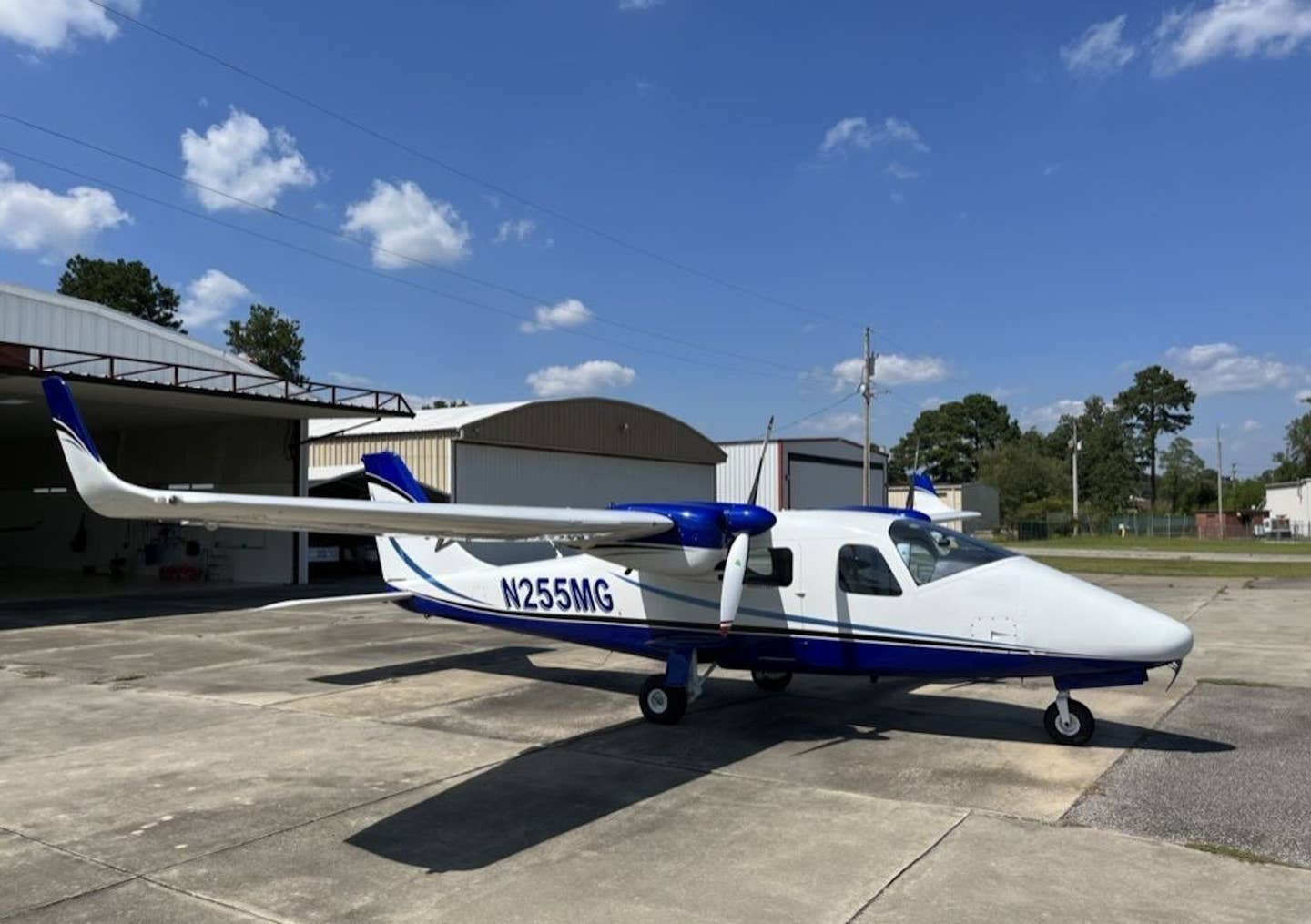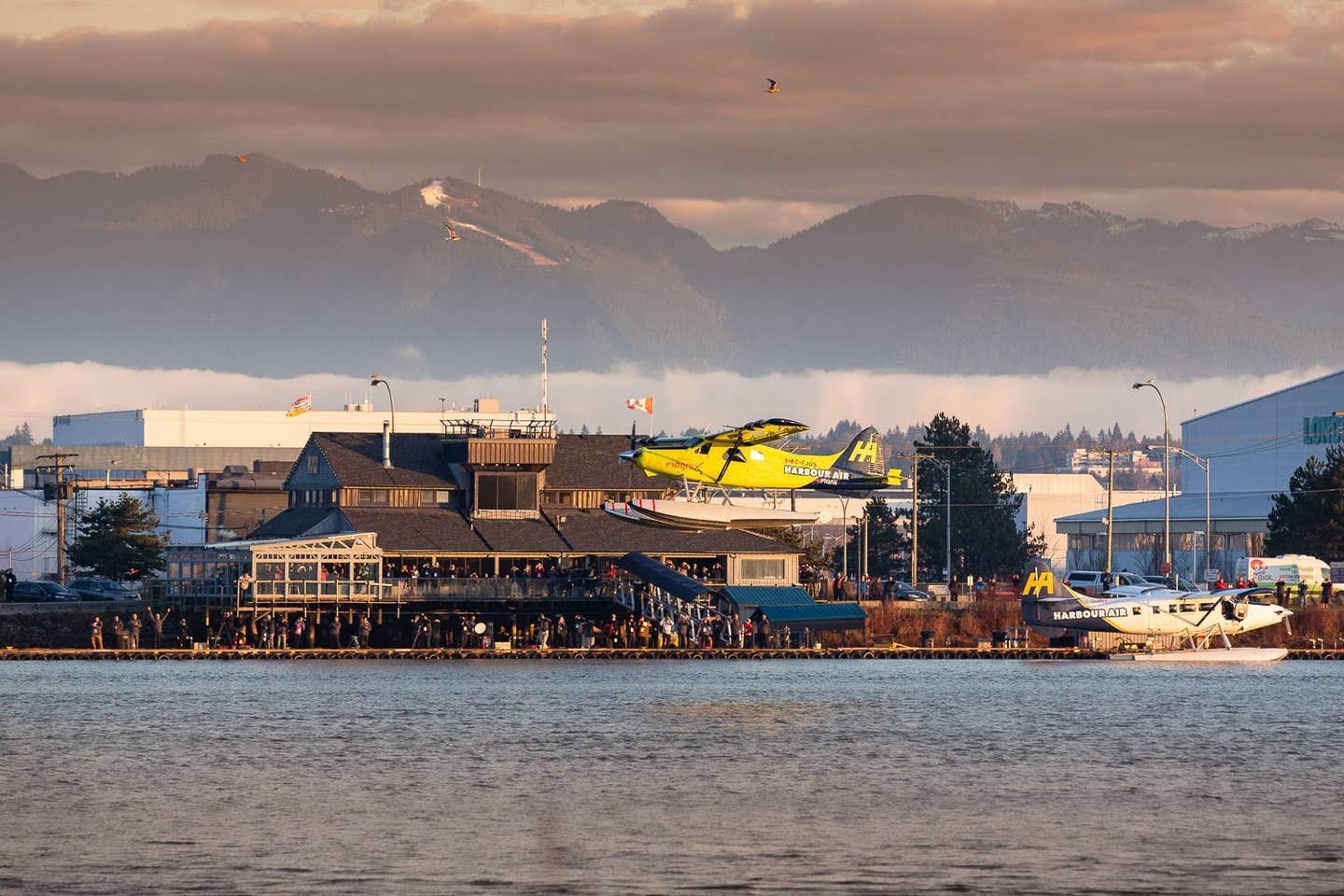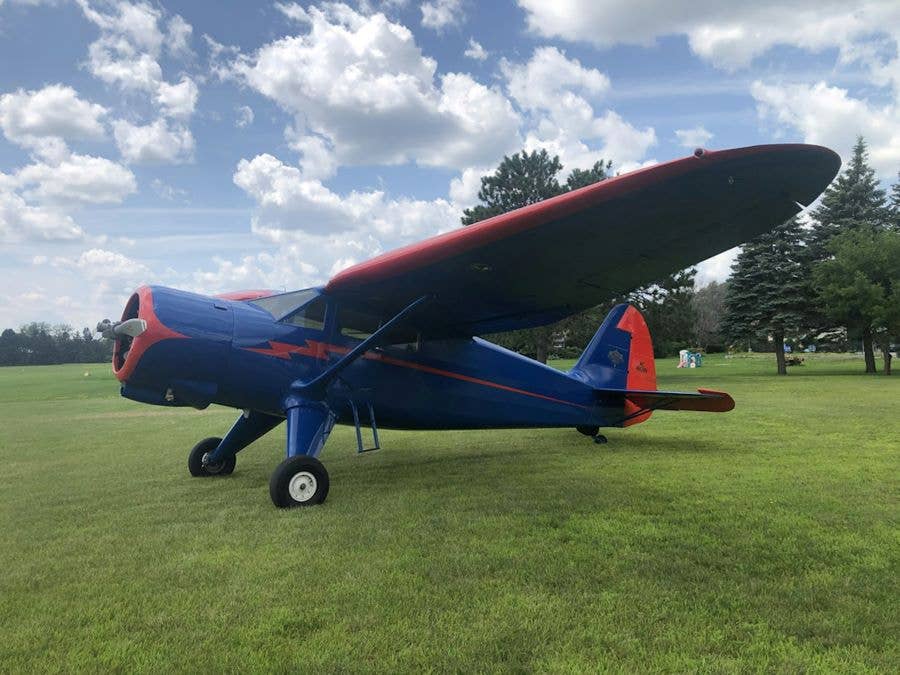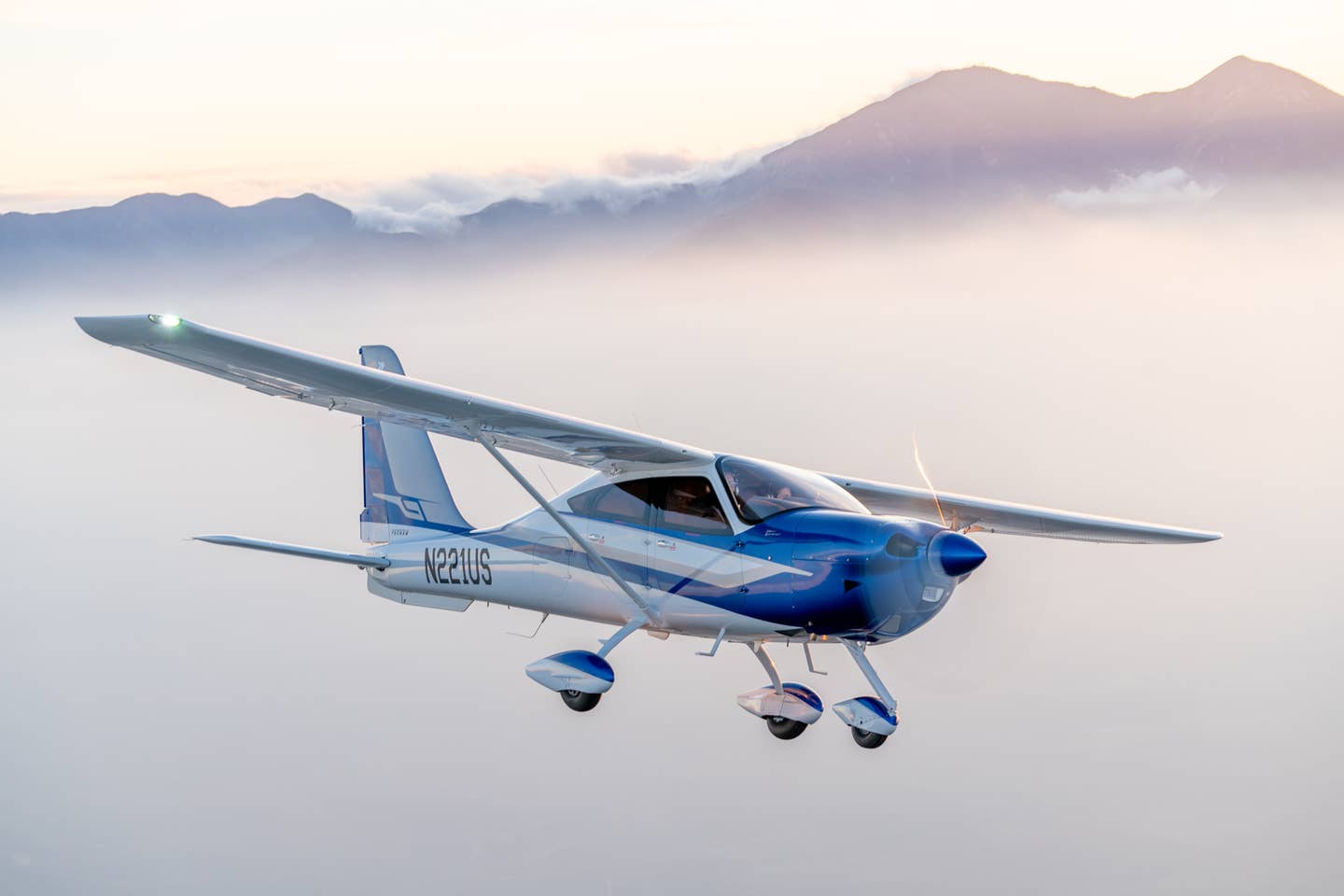Air Compare: Grumman AA-5 vs. Mooney M20 Series
Moving four seats from point A to point B as quickly and efficiently— as possible.

[Credit: Jim Stevenson]
During the 1960s and 1970s, general aviation was bustling. Fuel was inexpensive, disposable income was relatively plentiful, and airplanes were selling well. Bolstered by various wartime production surges, manufacturers were well-equipped to satisfy the market’s demand, and competition among general aviation aircraft manufacturers was intense.
If you're not already a subscriber, what are you waiting for? Subscribe today to get the issue as soon as it is released in either Print or Digital formats.
Subscribe NowCustomers in every segment were welcomed with an array of options. A shopper interested in a two-seat trainer would have a variety of choices ranging from fabric taildraggers to brand-spanking-new concepts like the Piper Tomahawk and Beechcraft Skipper. Similarly, a shopper looking for four seats and good cross-country capability had a fascinating variety of models from which to choose.
This four-place cross-country category was particularly competitive. With offerings from Cessna, Beechcraft, Piper, Ryan, Aero Commander, Bellanca, Mooney, Grumman, and others, manufacturers found novel ways to provide solutions to a common mission—moving four seats from point A to point B as quickly and as efficiently as possible.
While many utilized similar designs from similar playbooks, a few took their own paths. Among the more interesting alternatives were Mooney with their M20 series, and Grumman with their AA-5 models. These two families of aircraft utilized completely different airframe construction techniques, vastly different cabin designs, and even differed with regard to fixed vs. retractable landing gear. Yet their missions were essentially the same. Here we explore why one might choose a Grumman AA-5 over a Mooney M20 and vice versa.
Design and Evolution
Looking at the Grumman AA-5 and the four-cylinder Mooney M20 models, one might infer that the chief designers from each company agreed on very little.The low-slung M20 is equipped with retractable gear, while all AA-5 models utilize fixed gear. The Mooney sported the characteristic forward-swept tail that pivots in its entirety to provide pitch trim. Conversely, Grumman’s tail is traditional in both function and appearance. Even access to the cabins is vastly different, with Mooney utilizing a single right-side door while Grumman opted for a large canopy that slides back on rails to provide access from both sides.
Despite the differences, there are some fundamental similarities. The low-wing configuration, for example, four seats, and four-cylinder engines that produce from 150 to 220 horsepower.
To dig down into specifics and conduct a true apples-to-apples comparison with the AA-5, the wide array of Mooney M20 models offered over the years must be narrowed down. Produced from 1955 into the 2000s, more than 11,000 examples have been delivered, and the wide range of subtypes can be divided into groups based on cabin length.
The M20, M20A, M20B, M20C, M20D, and M20E are the “short-body” Mooneys. The M20F, M20G, M20J, and M20K had an additional foot of fuselage length added ahead of the back seats and are thus known as the “medium-body” Mooneys. “Long-body” Mooney production began in 1988. As the long bodies utilize larger, six-cylinder engines, they are less comparable to the Grumman AA-5 series, and we’ll exclude them from this review.
Short- and medium-body Mooney production took place from 1955 through 1998. With a handful of exceptions, the vast majority utilized the Lycoming O-360 and IO-360 engines, ranging from 180 to 200 horsepower. The M20K was the only turbocharged variant among the short and medium bodies and offered 210 to 220 horsepower.
The relative consistency among short- and medium-body Mooneys makes the shopping process fairly straightforward. Many shoppers exclude the M20and M20A from contention, as these early subtypes incorporated wood construction in the wing and tail. The criteria among the remaining models mostly come down to engines, which typically becomes a choice between 180 and 200 horsepower. Besides cabin length and the presence of an additional cabin window in the medium-body airplanes, other differences include manual vs. powered flaps and landing gear, and throttle quadrants vs. push/pull knobs.
One notable development was the M20D Master, which came from the factory with fixed, non-retractable landing gear. It was marketed as “convertible” and one could upgrade it to retractable gear. Virtually all have been converted, and only a few remain in their original fixed-gear configuration. While the fixed gear reportedly reduces cruise speed by approximately 25 knots, it would also presumably reduce insurance premiums appreciably.
The Grumman AA-5 Traveler has had a considerably less complex array of subtypes, but was produced under a variety of manufacturer names as ownership of the company changed over the years. Production began in 1971 with the 150 hp AA-5 Traveler. This initial type was produced by American Aviation and later, by Grumman Aviation.
The AA-5A Cheetah was introduced as a 1976 model. Produced by Grumman American and then Gulfstream American, it had the same horsepower but was faster, thanks to drag reduction modifications. Along with all subsequent AA-5 subtypes, it incorporated a larger horizontal stabilizer that expanded the CG range, and fuel capacity increased from 37 to 52 gallons.
For the 1975 model year, the 180 hp Grumman American/Gulfstream American AA-5B Tiger was introduced. In addition to the greater speed and power provided by the more powerful engine, it also introduced a slightly thicker wing spar and a 200-pound gross-weight increase.
Production of all AA-5 subtypes ended in 1979, but between 1990 and 1993, a newly-formed company, American General Aviation Corporation, resumed production of the Tiger as the AG-5B. AGAC modified it with various minor aerodynamic and systems improvements, and built a total of 181. The Tiger was resurrected yet again when Tiger Aircraft produced an additional 51 AG-5Bs between 2001 and 2006.
Market Snapshot
| Type | Number Listed | Median Price | Median Airframe Hours |
| Short- & Medium-body M20s | 44 | $119,000 | 4,215 |
| Short-body M20s | 21 | $69,450 | 4,188 |
| Medium-body M20s | 23 | $140,000 | 3,339 |
| All AA-5s/AG-5Bs | 20 | $122,550 | 2,970 |
| AA-5 | 6 | $62,500 | 3,698 |
| AA-5A | 3 | $79,000 | 2,621 |
| AA-5B | 9 | $137,000 | 2,940 |
| AG-5B | 2 | $131,925 | 2,970 |
A recent survey of M20 and AA-5 variants listed for sale on six of the most popular online classified sites at the time of this writing provides a breakdown of the median asking prices.
One of the most notable takeaways is the consistency in asking prices of the two types. For all of their differences, they still utilize nearly-identical engines to move four seats a similar distance at a similar economy. The market appears to place similar values on this level of functionality.
Predictably, newer models command higher prices and vice-versa. And not surprisingly, the older airplanes generally have a higher number of airframe hours than the newer ones. One anomaly is apparent in the median price of the newer Tigers, although the limited sample size likely plays a role. Also apparent is the massive increase in asking prices post-pandemic. While we did not conduct a comprehensive pricing survey of the M20 family prior to or in the early days of the pandemic, a FLYING evaluation of the AA-5 in mid-2020 revealed a median asking price of $48,500 across all subtypes. Today, that figure has increased to $122,500—a 153 percent increase.
The number of active listings for each type reflects production numbers and fleet sizes. With such a lengthy production run, just over 9,000 short- and medium-body M20s have been produced to date. In contrast, only 3,282 AA-5s have been produced in total.
Today, 5,231 short- and medium-body M20s remain active on the FAA registry, compared to 1,839 Grumman AA-5s. This reflects 58 and 56 percent of the original fleet sizes, respectively. This illustrates the greater selection that prospective Mooney owners have compared with those shopping for a Grumman.
Flight Characteristics
The different design philosophies between the Grumman and the Mooney become evident the moment one steps onto the wing to board. Like many low-wing aircraft, admittance to the Mooney is provided via a single door on the right side of the fuselage. Comparatively, the Grumman incorporates a canopy that slides back on rails, allowing occupants to board from either side. When it comes to ease of access, Grumman has the advantage here. If there’s a downside, it’s that opening the canopy in the rain will expose far more of the cabin to the elements.
Once settled inside, the expansive windows that make up the Grumman’s canopy and low sill height provide a spacious feel with a panoramic view. But while the Grumman has an inch and a half more headroom than the Mooney, the Mooney is approximately 1 to 3 inches wider, depending on the specific model and which interior door and wall panels are installed.
The Mooney’s slight lack of headroom can create a marginally more restrictive feeling. Similarly, the Mooney’s panel and window sills are higher than the Grumman’s, adding to the closed-in effect. Talk to Mooney owners, though, and even those on the taller side report having sufficient space to stretch their legs and get comfortable.
The back seats differ more than the front. Grummans provide backseat occupants with a more roomy environment, and Grumman owners love how easy it is to fold the back seats forward to create a spacious cargo area. With the removal of their front wheels, two full-sized adult bicycles can easily be carried in the back.
The rear seating area in short-body Mooneys is notoriously cramped. Anyone planning to invite an adult to ride there with any regularity would be well-advised to opt for a medium-body Mooney, as the additional foot of fuselage length is placed between the front and rear seats. Mooney owners report no perceptible difference in front-seat comfort between short- and medium-body models.
Another difference arises while taxiing. While the Mooney’s rudder pedals are linked directly to nosewheel steering in the traditional manner, the Grumman utilizes a free-castering nosewheel and, thus, requires differential braking to steer and maintain directional control. Critics of this design are quick to mention the increased brake wear that comes from frequent steering inputs and brake applications, but fans counter by touting the ability to deftly pivot into and out of tight parking spaces with little effort.
Takeoff, climb, and cruise performance vary substantially based on specific subtypes. Grumman owners report that the 180-hp Tiger, despite having only 30 more horsepower than the Traveler and Cheetah, exhibits vastly better takeoff and climb performance than the lower-powered versions. Similarly, the performance difference between a 180 hp Mooney with no aerodynamic mods and a 200-plus horsepower Mooney with those mods is substantial.
A Lot of Speed in an Economical Package
FLYING has flown the Mooney M20s and Grumman AA-5s since each model was born. And since that time, we've remarked on how they deliver honest cross- country speed at a price that was relatively easy to accept.
In a March 1997 used airplane report on the M20 series, Richard L. Collins wrote, "In 1963, Mooney tweaked the M20C Mark 21 and added the M20D to the line. Dubbed the Master, it is a fixed-gear airplane with the option to convert it to a retractable. The Master's standard price new was $13,995, and when you got tired of cruising at 140 mph, Mooney would convert the airplane to a retractable for $1,600. Most have been converted...Mooney was selling a lot of airplanes in those days simply because they delivered a lot of speed in an economical package."
The same words echoed in FLYING's report on the new Tiger in February 1975. Collins wrote, "If the next era is to be one of efficient simplicity, Grumman American is right on target. The four GA lightplanes...are as basic as they come...[and the Tiger's] 139-knot cruising speed, healthy rate of climb, and good useful load make it a contender in the marketplace…"
We can, however, make a direct comparison by reviewing the published performance data of a 180 hp Tiger and a 180 hp M20C. At maximum takeoff weight and similar environmental conditions, some differences become apparent. The Mooney, for example, provides better takeoff performance, with a ground roll of 815 feet, and 1,395 feet required to clear a 50-foot obstacle. This compares to 909 feet and 1,628 feet for the Grumman, respectively.
Once in the air, the two airplanes return nearly identical rates of climb at sea level—800 fpm for the Mooney and 808 fpm for the Grumman. In cruise, the Mooney’s retractable gear provides an advantage in cruise speed, but not as large as one might expect. At 7,000 to 7,500 feet, 32 to 34 degrees Fahrenheit, and 2,700 rpm, the Mooney will reach 146 knots—only slightly faster than the 139-knot Grumman.
In real-world conditions with decades-old airplanes, M20C owners report 140- to 145-knot cruise speeds, and Tiger owners report a range of 125 to 135 knots. Cheetahs are typically about 10 knots slower. On the other end of the spectrum, one M20E owner reports his 200-hp machine with extensive speed mods reaches 155 to 160 knots while burning 10 gallons per hour.
In terms of knots per gallon, both airplanes perform admirably, especially compared to competing types. At the commonly-reported figures of roughly 135 knots and 9 gallons per hour, the Grumman Tiger boasts 15 knots per gallon of fuel burn. At an additional 10 knots with the same fuel burn, many M20C owners see that figure rise to 16.
While a new owner of either airplane would be wise to obtain flight instruction from an instructor intimately familiar with the type, Mooney owners are quicker to warn newcomers to the peculiarities of the M20, emphasizing precise airspeed control on final.The airplane is particularly unforgiving of being forced onto the runway before the wing is finished flying. In an attempt to avoid pilot-induced oscillations, one Mooney training curriculum strongly warns against attempting to salvage a bounced landing, and recommends initiating a go-around on the first bounce.
The Mooney requires more runway distance for landing than the Grumman, with a 595-foot ground roll and a 1,550-foot distance over a 50-foot obstacle listed in the book. This compares with 415 feet and 1,135 feet for the Grumman. This may be partially because of the Mooney’s 69-knot approach speed, which is 6 knots faster than the Grumman.
Valuable as raw numbers may be, Grumman fans tout some of the less-quantifiable characteristics and features of their beloved airplanes. All AA-5s, for example, can be flown with the canopy slightly open. On the ground, it may be opened up completely for a refreshing blast of cool air on hot summer days.
Grumman owners also rave about their airplane’s handling characteristics. Control forces are notably light, requiring only slight fingertip pressures to maneuver as desired. The M20 series provides accurate, predictable handling as well but is noticeably heavier on the controls. This may appeal to instrument pilots with a preference for hand flying. Both airplanes utilize torque tubes and push/pull rods, providing a more precise connection to the ailerons than traditional cables.
According to the books, the M20C has a useful load of 1,050 pounds, slightly more than the Tiger’s.
Ownership
A thorough pre-purchase inspection by an experienced A&P is critical for both the AA-5 and M20 series. In addition to the usual threat of corrosion in aging aircraft, attention is prudent in areas unique to these types.
Although the Mooney is traditional in many respects, there are a few concerns. Mooney service bulletin M20-208B, for example, recommends a thorough annual inspection of the steel frame surrounding the cabin to determine whether any corrosion is present. As this check is not mandated, some owners might not perform it annually as recommended.
The nose gear is another critical check for the Mooney. The structure has strict tow limits, and if an unaware line worker attempts to turn the nose gear too sharply in either direction while towing, structural damage can occur that requires a rebuild to the tune of several thousand dollars. A careful visual inspection determines whether this damage is present.
Mooney fuel tanks are known to develop leaks. While they can be resealed, fuel bladders are a popular modification providing a more permanent solution. And although the Mooney’s landing gear lacks more complex air shocks or oil damping, the manufacturer does recommend replacement of the rubber shock absorber pucks every 8 to 10 years at a current cost of approximately $2,000 for the pucks themselves, before labor.
The Grumman has its unique pre-purchase and ongoing maintenance considerations. Early AA-5s developed problems with airframe bonding failing and resulting in delamination. Fortunately, most that have experienced the problem are thought to have been identified and permanently fixed. It remains important to have this confirmed by an A&P familiar with the issue.
Simple as the Grumman’s landing gear is, particularly compared to a retract, it has unique maintenance needs. The nose gear utilizes a design that should be thoroughly inspected prior to purchase and then at every annual. Grumman maintainers report that this item may be skipped or completed in an insufficient manner, resulting in pricey repairs down the road.
AA-5 wing spars are life-limited to 12,000 to 12,500 hours. Few AA-5s are approaching this amount of use, and the median airframe hours among the examples listed for sale at the time of this writing were less than 3,000. Anyone considering a particularly high-time AA-5 would be wise to take it into consideration.
The Grumman is otherwise a straight forward airframe design. Unlike most comparable aircraft, there are no moving parts inside an AA-5's wing—all flap and aileron actuation is achieved via easily accessible torque tubes, upon which each control surface pivots. One maintainer points out there are fewer moving parts in an AA-5 than in a Cessna 150, and another enjoys how all flight control cables are neatly located in the center of the aircraft and are rather short.
Otherwise, no airworthiness directives (ADs) make ownership burdensome for either airplane. All tend to be one-time or recurring ADs that are straightforward to address. The Mooney owners we surveyed report uneventful annuals at $2,500 to $3,000. Grumman owners report a range of $1,500 to $2,500.
Insurance cost is one element of ownership in which the two types differ substantially. To compare the two types, we asked an insurance broker to create quotes for a 40-year-old private pilot with no instrument rating, 250 hours total time, and 5 hours in type. For a 1977 Grumman Tiger valued at $110,000 and liability limits of $1,000,000/$100,000, this theoretical pilot could expect to pay roughly $1,900 per year. For a 1969 Mooney M20C with the same hull value and liability limits, they could expect to pay roughly $6,000 per year.
If this pilot obtained an instrument rating and 1,500 hours total time with 25 hours in type, they could expect to pay roughly $1,500 per year for the Grumman and $4,000 per year for the Mooney. That makes the Mooney nearly three times as expensive to insure—an added $208 to $341 per month over a year in this case. Both models are well supported by active and bustling owners’ groups. The Grumman Owners and Pilots Association is the original type club for the Grumman. It holds regular events including an annual convention, and offers a pilot familiarization program for new Grumman pilots.
The Mooney Aircraft Pilots Association, or MAPA, is a valuable resource for Mooney ownership information. Additionally, Mooneyspace.com is an active forum, and Mooneysafety.com offers training resources and proficiency programs.
Our Take
In aviation, speed costs money, and diminishing returns approach quickly. When operating with a modest budget, the M20 and AA-5 series provide what might be the greatest-knot-per-dollar among four-place certified aircraft. Other types might offer more speed, but at the cost of six-cylinder fuel burn. Others might be less expensive to purchase and operate but will likely fall short in cross-country traveling ability.
Both the Mooney and Grumman seem to provide a nice balance of speed, operating economy, and ease of ownership. Without any overly difficult-to-source airframe parts, massive ADs, or orphaned engines in the equation, both types offer a compelling solution for longer-distance travel without an overly-burdensome ownership experience.
Perhaps best of all, both types are enthusiastically supported by vibrant owners’ groups. For a nominal annual fee, a new owner can unlock a level of support, expertise, and camaraderie that owners of less-common types can only dream of. Whether a buyer opts for the M20 or the AA-5, it’s a safe bet they’ll enjoy their purchase for many years.
This article was originally published in the April 2023, Issue 936 of FLYING.
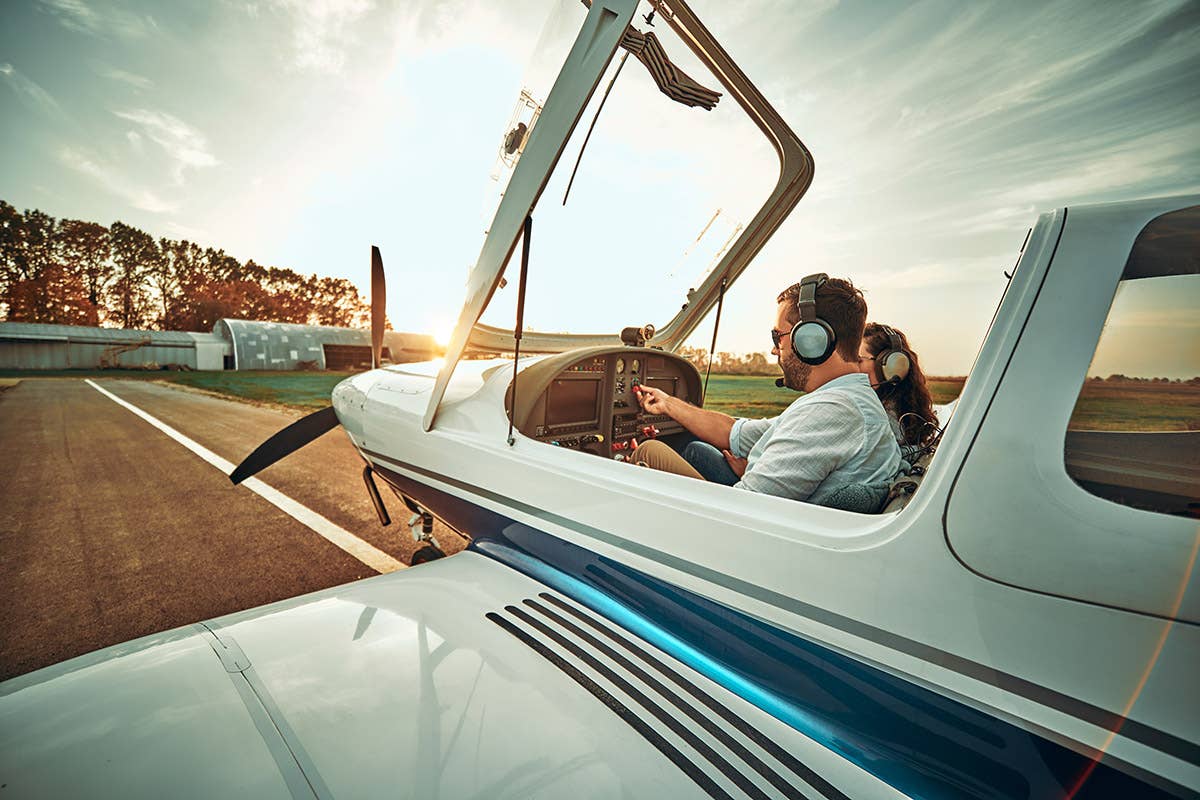
Subscribe to Our Newsletter
Get the latest FLYING stories delivered directly to your inbox



